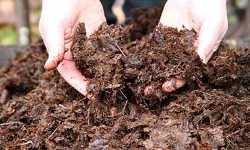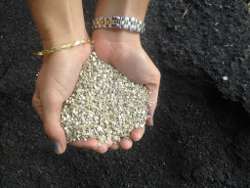Soil Amendments and How to Use Them to Improve Your Northeast Florida Soils
Two Types of Soil Amendments
Organic Amendments:

Organic amendments are composed of the decaying remains of animals and plants. Organic soil amendments are better known to you and I as compost, humus, peat moss, shredded bark, sawdust and leaf mold. They consist completely of materials that were once produced by living organisms. All organic amendments are natures “miracle cure all’s” and are commonly used in both sandy and clay soils to improve both the water and nutrient retention qualities of sandy soils as well as help aerate compacted soils and improve drainage of heavy clay soils.
Organic matter in the soil is also a very important energy source for bacteria, fungi, beetles, earthworms, anthropods and other organisms that live in the soil.
Inorganic Amendments:

You guessed it, inorganic amendments are just the opposite, they are the “never have been alive” or not carbon based soil amendments. Inorganic soil amendments are either mined, or man made. They include pearlite, vermiculite, gypsum, lime, colloidal phosphate, and sulfur.
Why are soil amendments important in Northeast Florida’s Soils?
1- Organic matter can occupy as much as 50 percent of the soil structure in more temperate regions of the United States, and as much as 90 percent in muck soils. Here in Florida, in our subtropical and tropical sandy soils, organic material can make up as little as 1-3 percent of the total soil components. Adding organic material to the soil improves the soil structure allowing your new plant material access to vital nutrients as well as improving soil aeration and drainage.
2- Construction alters the natural soil structures that have naturally been created over long periods of time. Somewhere near 90 percent of Floridians live in these altered by construction, urban areas. Urban soils, created in the process of construction by land clearing and property filling, in general become more compacted, less acidic, and can have lower nutrient concentrations. That can present the homeowner with a few challenges that soil amendments can solve for you in the Northeast Florida landscape.
3- Our warm and moist subtropical climate here in Northeast Florida, where the soils never freeze over and microorganisms never stop working! The warmer climate here both increases the decomposition rates and microbial activity in the soil, which means that the available organic matter occurring naturally or added as amendments breaks down quickly. Incorporating natural practices of leaving the organic materials created in our home landscapes, like grass clippings, plant trimmings, or leaves in the landscape and allowing them to degrade naturally over time can help build organic material back into the soils.
Adding both organic and inorganic materials into planting beds can quickly alleviate many challenges faced by Northeast Florida gardeners. Amendments can help your soil maintain a proper PH level, keep a supply of needed nutrients available to plant roots for absorption, ease the passage of water through soils, decrease the effect of soil erosion, improve soil aeration and much more.
Here is a list of the more common soil ammendments and the challenges that they can help with in the landscape. Hope it helps!
Bio solids
Coconut Coir
Compost
Composted Cow Manure
Composted Chicken Manure
Grass Clippings
Gypsum
Mushroom Compost
Leaf Mold
Lime
Manure
Pea Gravel
Pearlite
Peat Moss
Pine bark fines
Pine Straw
Potting Soil
Sand
Saw Dust
Straw
Sulfur
Top Soil
Vermiculite
Wood Ash
Wood Chips
Worm Castings

